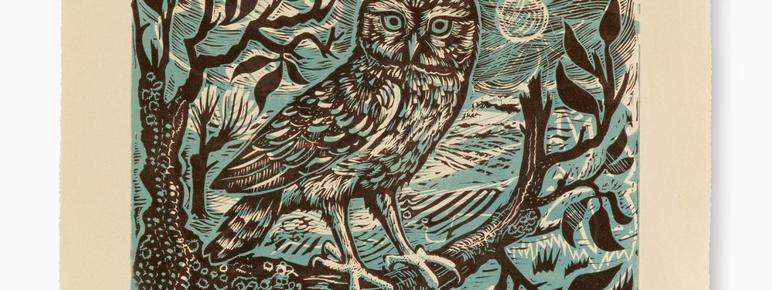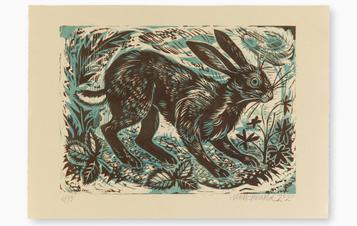
About Mark Hearld
Illustrator Mark Hearld is known for lithographs, paintings and collages that take inspiration from the flora and fauna of the British countryside.
In the run up to his 2021 exhibition at YSP this special selection of new collages and lino cut prints features, amongst other works, Mark’s latest design, Tyger Tyger, which has been created for furnishing fabric with Hearld’s longstanding collaborator St. Jude's.
We are extremely grateful to Mark Hearld and St Jude's for enabling a small number of bags to be created to celebrate the launch of this beautiful fabric. Featuring Hearld’s Tyger Tyger print, these special bags have been produced in very limited quantity exclusively for YSP.
Hearld is remarkably versatile and works across a number of mediums, producing litho, screen and lino cut prints, paintings, collages and editioned ceramics. He seems equally as comfortable in his studio with paint brushes and paper as he does curating exhibitions for museums and working as a stylist for projects.
Mark Hearld studied Illustration at Glasgow College of Art before completing an MA in Natural History Illustration at the Royal College of Art. His work is based on observations of the natural world, influenced by folk art and mid-twentieth century Neo-Romanticism and the gaiety of 1930s Modernism. He is inspired by British artists such as Eric Ravilious, John Piper, Enid Marx and Edward Bawden.
Hearld’s work is now exhibited extensively across the UK and commissions include set design for Nanny McPhee, fashion designs for Boden, interior fabrics for St. Jude's and Sessions & Co, alongside museum and gallery projects for Tate, York Art Gallery and Compton Verney.
You may also like
- News

Artist Editons available from YSP Shop
13 December 2023 - Art Outdoors

Kimsooja: A Needle Woman: Galaxy was a Memory, Earth is a Souvenir
Kimsooja developed this elegant and towering conical sculpture in collaboration with scientists at Cornell University. The nanopolymer in which its panels are covered enhances the refractive qualities of light, giving an iridescent effect similar to that which occurs naturally on the wings of a butterfly or a beetle’s shell. It is responsive to changing light conditions and brought to life by sunlight on its surface. - Art Outdoors

Serge Spitzer: Untitled
The sculpture creates, encloses and protects its own interior, which can be glimpsed through the spaces held open by rubber pads. Spitzer chose to reflect upon the character and history of the location for his sculpture and to encourage active looking and questioning. It is not immediately clear if the beam emerges from, or supports, the quarry face. When seen from different angles, the sculpture creates different senses of stability and balance, of open and closed spaces. - Art Outdoors

Erwin Wurm: Balzac
This 3.2m high painted aluminium work was created for the Trap of the Truth exhibition, and was generously donated to YSP by Erwin Wurm when the exhibition closed.



